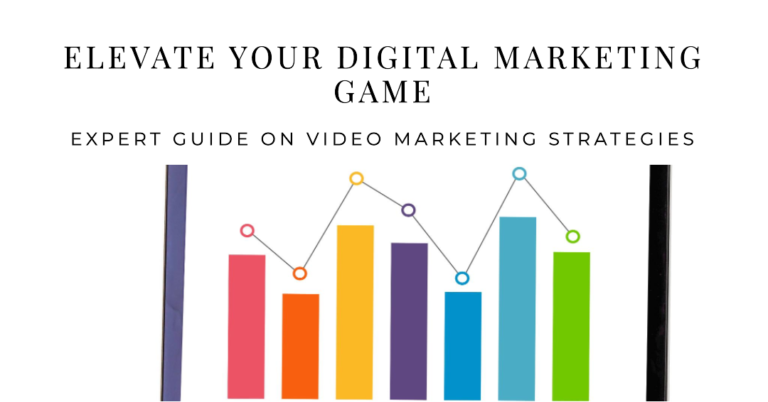In the ever-evolving landscape of digital marketing, where trends and algorithms shift frequently, finding a strategy that stands the test of time is a holy grail. One such strategy is the creation and utilization of evergreen content. These timeless pieces of content provide long-term value, driving consistent traffic, improving SEO, and delivering lasting results. In this comprehensive guide, we will explore the concept of evergreen content, its vital role in digital marketing, and how to leverage it effectively.
Understanding Evergreen Content
Evergreen content, as the name suggests, remains fresh and valuable over time. It doesn’t expire or become irrelevant. It’s the digital marketing equivalent of an enduring classic. This type of content can be an article, blog post, video, infographic, or any other format that continues to engage your audience and deliver value, often for years after its initial publication.
The Value of Evergreen Content in SEO
Evergreen content is a potent asset for improving your website’s search engine rankings. Search engines, particularly Google, prioritize content that is consistently relevant and informative. Here’s how evergreen content can boost your SEO efforts:
- Long-term Traffic: Evergreen content attracts organic traffic over an extended period. As it remains relevant, it consistently draws visitors to your site, boosting your overall traffic.
- Backlinks and Authority: Over time, high-quality evergreen content tends to accumulate backlinks, contributing to your site’s authority. This, in turn, enhances your SEO rankings.
- Improved Dwell Time: When visitors find valuable evergreen content, they tend to spend more time on your site. This signals to search engines that your content is engaging and relevant.
- Reduced Bounce Rate: Evergreen content helps reduce your site’s bounce rate since it provides solutions to users’ problems and keeps them engaged.
Key Elements of Evergreen Content
Creating evergreen content is an art. To craft timeless pieces, consider these essential elements:
- Relevance: Choose topics that address common, enduring issues within your niche. Avoid trends or subjects with short lifespans.
- Usefulness: Provide practical solutions, insights, or information that remains valuable over time. Think of content that can help beginners and experts alike.
- Quality: Invest in thorough research, well-structured content, and excellent writing. Quality content is more likely to withstand the test of time.
- Evergreen Keywords: Use keywords that have a consistent search volume and relevance. Tools like Google Keyword Planner can help you identify such keywords.
Types of Evergreen Content
Evergreen content comes in various forms, offering versatility in catering to your audience and goals:
- How-to Guides: Step-by-step tutorials and guides on common tasks or challenges.
- Tutorials: In-depth tutorials that educate your audience on specific subjects or skills.
- FAQs: A comprehensive list of frequently asked questions and answers related to your niche.
- Educational Articles: In-depth, well-researched articles that explain complex topics.
The Lifecycle of Evergreen Content
Evergreen content doesn’t mean “create and forget.” It requires maintenance and updates to remain relevant and valuable. Here’s a brief guide on how to manage the lifecycle of evergreen content:
- Regular Auditing: Periodically assess your evergreen content to identify outdated information or areas for improvement.
- Content Refresh: Update the content by revising, adding new information, or improving the visuals to keep it current.
- Promotion: Repromote your updated evergreen content on social media and through email marketing to reach a broader audience.
Keyword Research for Evergreen Content
A strong keyword strategy is vital for evergreen content. To ensure your content remains relevant and discoverable, follow these insights:
- Focus on Evergreen Keywords: Target keywords that have consistent search volume and are not tied to specific trends.
- Long-Tail Keywords: Use long-tail keywords that address specific problems or queries your audience may have.
- Competitor Analysis: Research what keywords your competitors are targeting and identify gaps or opportunities.
Promoting Evergreen Content
Creating evergreen content is just the beginning. To maximize its impact and reach a broader audience, you need to promote it strategically. Consider these tactics:
- Social Media Promotion: Share your evergreen content regularly on your social media platforms, accompanied by engaging visuals and compelling captions.
- Email Marketing: Include links to evergreen content in your email newsletters, targeting both new subscribers and long-time subscribers who may not have seen it.
- Guest Posting: Contribute your evergreen content as guest posts on relevant industry websites to reach a wider audience.
- Link Building: Seek opportunities to build high-quality backlinks to your evergreen content from reputable websites.
Measuring the Success of Evergreen Content
To determine the effectiveness of your evergreen content, you need to track key performance indicators (KPIs). Focus on the following metrics:
- Traffic: Monitor the volume of organic traffic to your evergreen content over time.
- Engagement: Track user engagement metrics such as time on page, bounce rate, and social shares.
- Conversions: Measure how your evergreen content contributes to lead generation or sales.
- Backlinks: Keep an eye on the number and quality of backlinks your evergreen content accumulates.
Real-Life Examples of Evergreen Content
Learning from real-life examples is an excellent way to grasp the power of evergreen content. Here are a few businesses and websites that have mastered the art of creating timeless content:
- Neil Patel’s Blog: Neil Patel’s comprehensive guides and educational content continue to attract traffic years after publication.
- Wikipedia: The epitome of evergreen content, Wikipedia articles consistently rank at the top of search results and offer enduring information.
- Moz’s Beginner’s Guide to SEO: This guide, updated periodically, remains a go-to resource for those learning about SEO.
Crafting Your Evergreen Content Strategy
To conclude, let’s focus on crafting a tailored evergreen content strategy for your brand and marketing goals:
- Identify Your Audience: Know your target audience’s pain points and interests to create content that speaks to their needs.
- Content Calendar: Plan your evergreen content strategy in advance, mapping out topics and publication dates.
- Distribution Plan: Develop a detailed promotion plan for each evergreen piece, including which channels to use and when.
- Auditing and Refreshing: Schedule regular audits and updates for your evergreen content to ensure its continued relevance.
In conclusion, evergreen content is a powerful tool in the digital marketing landscape. By understanding its value, creating content with longevity in mind, and following best practices for promotion and measurement, you can ensure that your content continues to deliver value and maintain its impact over the long haul. For a sustainable and successful digital marketing strategy, make evergreen content a cornerstone of your efforts.






